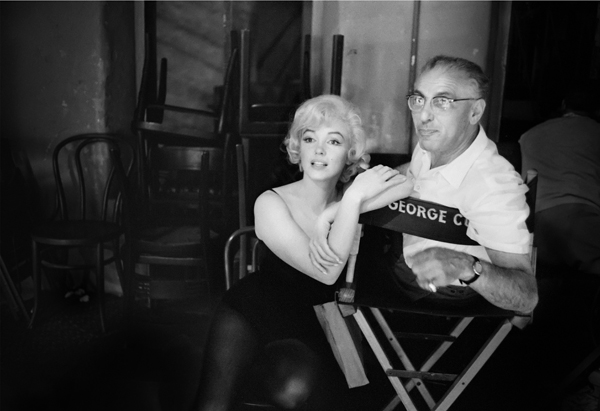
From her scandalous affair with Yves Montand on the set of Let’s Make Love to her firing from Something’s Got to Give, Marilyn’s collaboration with director George Cukor was never plain sailing. In her new book, What Price Hollywood?: Gender and Sex in the Films of George Cukor, Elyce Rae Helford looks at their work together.
Celebrated as a ‘woman’s director’ (although this label was also a veiled slur on his homosexuality), Cukor was noted for his strong female leads and ability to handle ‘difficult’ actresses, from Katharine Hepburn to Monroe. Helford considers Let’s Make Love (1960) alongside two other musical comedies from the same era, Les Girls (1957) and My Fair Lady (1964.)
Let’s Make Love focuses on a French billionaire (Montand) who conceals his identity to play himself in a satirical revue, and then falls in love with his duped leading lady. In all three films, Helford argues, the differences between men and women is a major theme – perhaps reflecting the increasing independence of women in American society at the time. “In Let’s Make Love,” she writes, “so much deception occurs that a happy ending must be forced in an elevator.”
“Because these films are musical comedies, however,” Helford continues, “they feature moments of spectacular excess that point to their own artificiality, including the absurdity of (oppositional) gender roles.” Noting that all three films feature “exaggerated images suggesting nostalgia for past eras,” she points to Marilyn’s performance of a 1938 Cole Porter song, ‘My Heart Belongs to Daddy.’ While conceding that Let’s Make Love is “far less cherished” than Cukor’s other musical comedies from this period, Helford adds that it is also “rich with camp.”
“Its theatrical setting invites readings of gender-as-performance even as its narrative follows the typical Hollywood romance trajectory. However, like the moments of excess in Les Girls and My Fair Lady, this Marilyn Monroe and Yves Montand vehicle has its own explosive scenes of queerness. We can certainly ‘go camping’ in Marilyn Monroe’s pole-dancing, Lolita-referencing rendition of Cole Porter’s ‘My Heart Belongs to Daddy,’ for example. Here, her dancing in a childishly oversized cable-knit sweater coupled with sexy black tights is composed mostly of coy posing and running around a stage with a group of male dancers. In many ways, this updates her ‘Diamonds Are a Girl’s Best Friend’ number in Gentlemen Prefer Blondes (1953), even as it feels more like the very queer Jane Russell number ‘Ain’t There Anyone Here for Love?’